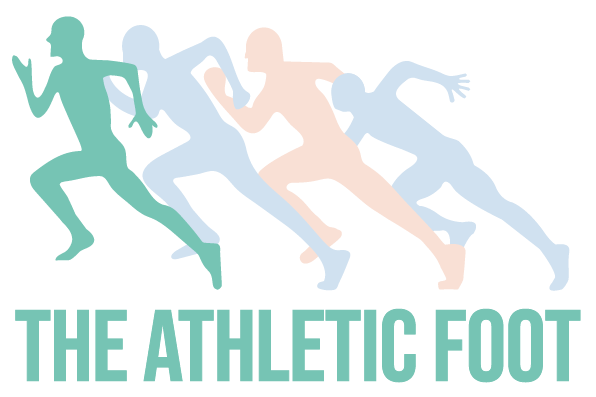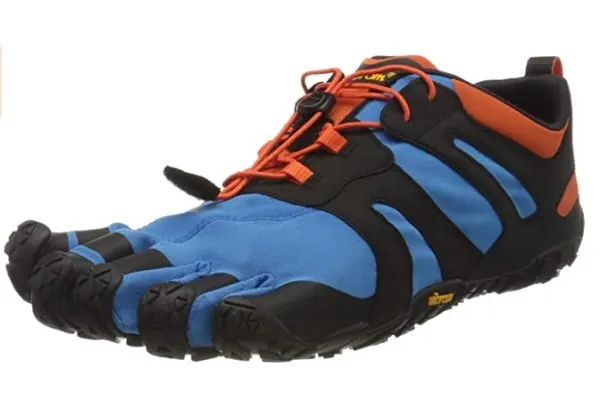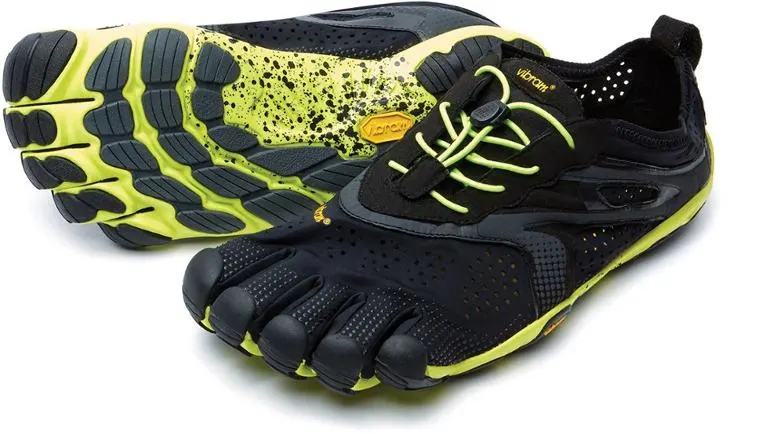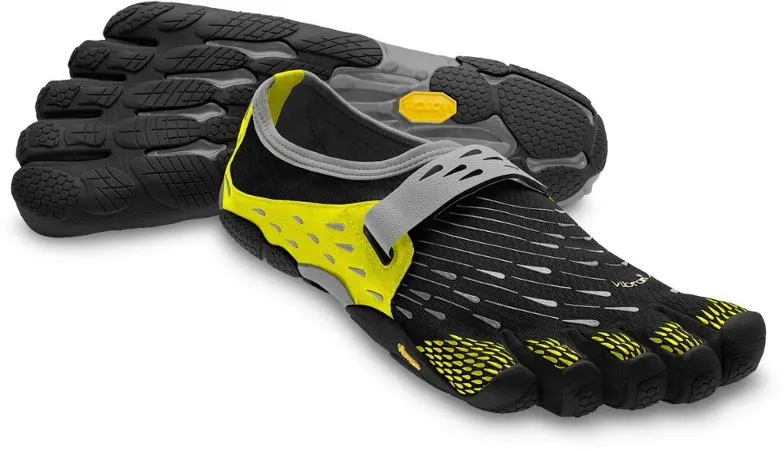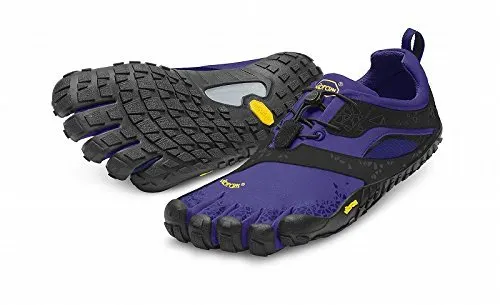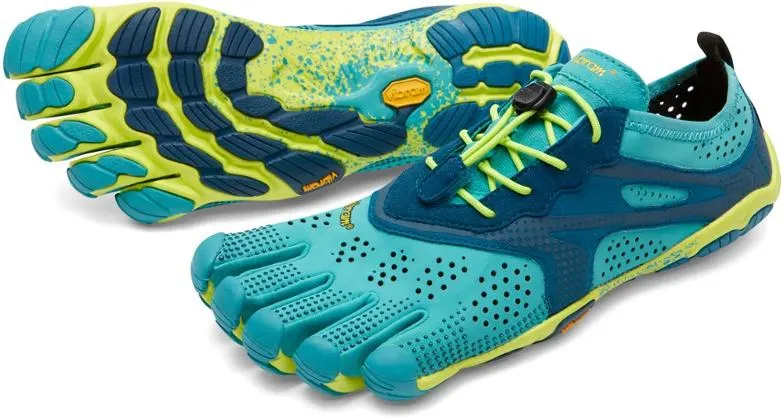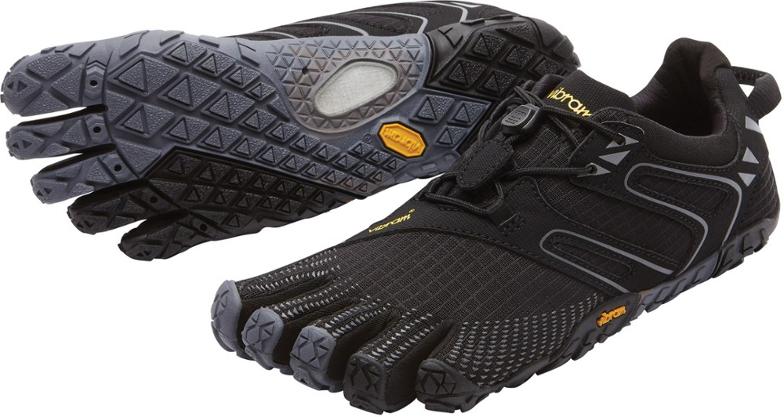You saying trying to design the best pair of running shoes is a booming business.
By 2022, the global athletic shoe market is projected to reach nearly $115 billion, with a substantial portion of that attributed to shoes specifically made for runners. But one trend you may not be familiar with is going against the grain with the complete opposite of conventional shoe design:
Barefoot running shoes.
The trend is stirring up so much conversation, in fact, that there was a documentary made, Impact, to explore the phenomenon of barefoot running.
In an interview with Skidmore News, Professor Rik Scare, Professor of Sociology at Skidmore College, explained his interest in barefoot running.
His interest was in fact, not only professional but personal. An avid runner, he was told a number of years ago that, because of his flat feet (little to no arch) he would require orthotics. But after countless injuries and struggling the find the right fit, he came upon shoes that offered not more cushioning, but quite a bit less.
It took him nearly a year and half to transition to barefoot running, but he’s never looked back since, and gone on to complete half and full marathons.
Contents
What even is Barefoot Running?
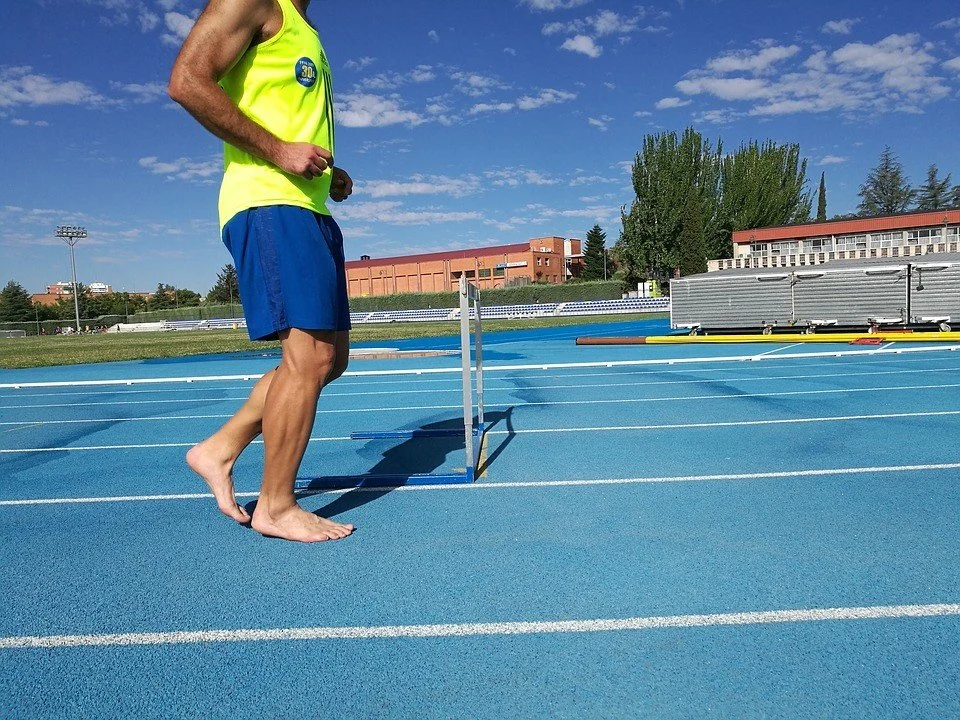
Barefoot running is not exactly how it sounds, and, in fact, what even barefoot running shoes are is a matter of debate (more on that later). Barefoot running, for most, doesn’t mean that you literally run barefoot, but that you purchase barefoot running shoes. The general concept is that conventional, increasingly cushioned shoes do runners more harm than good.
Modern running shoes, which incorporate different layers of cushioning for both comfort and stability, as well as thick heels and insoles, may change the very way we run. Richard Alleyne, a Science Correspondent for the British news organization, The Telegraph, explains that from an evolutionary standpoint we were designed to run on our toes and land on the balls of our feet.
Modern shoes, he argues, leads runners to land instead on their heels, which results in more movement, and, an increase in injuries.
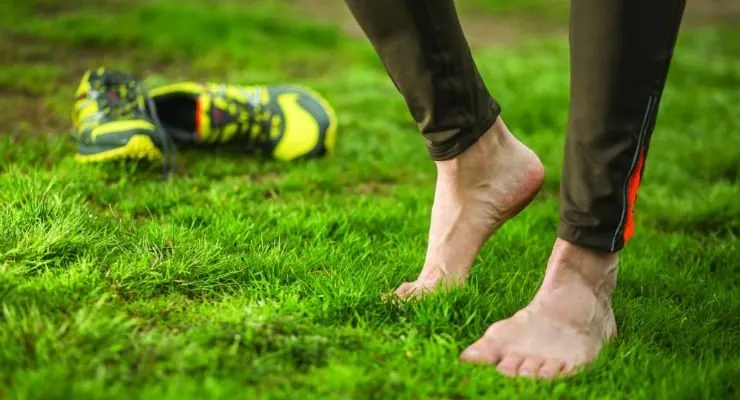
If this sounds far-fetched, consider this: a small study of 29 runners, conducted at the University of Exeter found that the force at which runners’ feet hit the ground was far less when using barefoot or minimal running shoes as opposed to conventional designs–which can be correlated with a reduced rate of injury.
Other studies have backed this up, but for now, they’re too limited to be conclusive.
Is there any consensus on the Pros and Cons of Barefoot Running Shoes? Like even what eventually turned out to be some of the best innovations in athletics and sports medicine, there’s still a good deal of debate as to the overall efficacy of barefoot running.
What barefoot running can offer, however, is an alternative for runners who, for a variety of reasons, do not feel modern cushioned shoes are benefiting them. Runners who have very low or even flat arches have recurring injuries, or other frustrations might at least look into swapping out for barefoot running shoes.
Here’s a list of some of the possible benefits some runners could see by choosing barefoot running shoes:
- Trains runners to land on the ball of the foot as opposed to the heel, which could result in less impact
- Can strengthen muscles and tendons in the foot
- Can improve balance
All of these benefits are contingent on how well you adjust to barefoot running, and also provided you do it cautiously, over time. There are also some potential downsides to going with a barefoot running shoe, including:
- Less protection against the elements, including cold, heat, precipitation, and debris, such as rocks, twigs, gravel, or unexpected materials, like glass.
- Too quick of a transition can lead to overworking, and possibly straining muscles and tendons
- Blisters will likely form, no matter the speed of the transition, until the foot adjusts and calluses
As you can see, switching to barefoot running shoes can be rewarding, but it’s not for everyone, and it must be done with caution. You’ll also want to ensure the paths you’re running on are free of potentially hazardous obstacles that could put your feet at risk.
Is there a difference between minimalist and Barefoot Running Shoes?
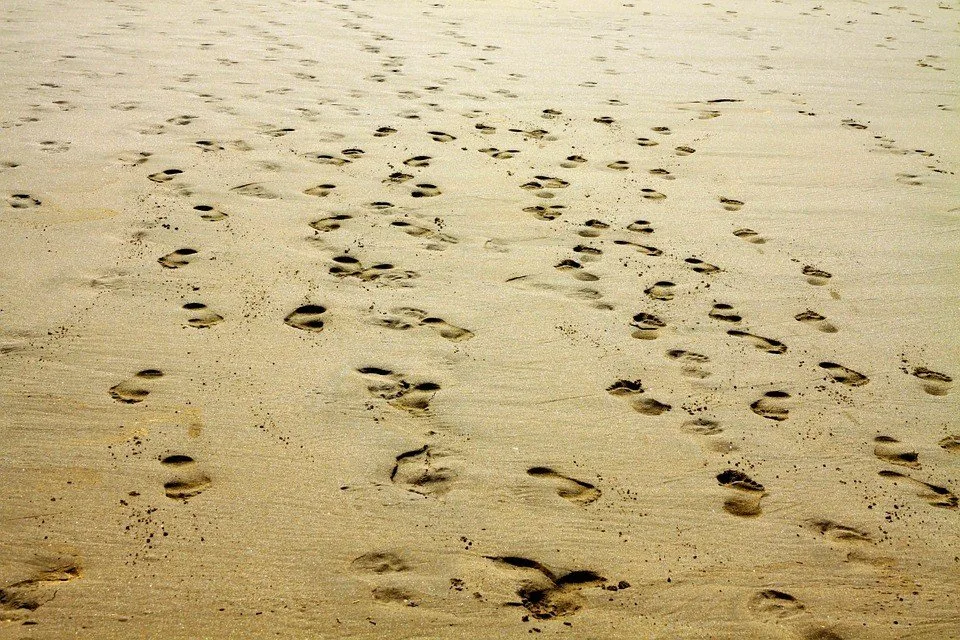
Finding the best barefoot running shoe, in part, depends on your definition of what a barefoot running shoe even is. In fact, minimalist and barefoot running shoes get pushed under the same umbrella, but there are some differences.
If we’re being precise, a barefoot running shoe most closely mimics barefoot running, while minimalist shoes are focused on simply using as little cushioning as possible.
Minimalist shoes look, well, more or less like your conventional running shoe–just with a lot less bulk. You’ll still see the traditional heel and toe drop, and the sole will still be padded.
Barefoot running shoes, on the other hand, look very different and challenge our idea of what shoes, in general, should look like. Barefoot running shoes have no heel to toe drop; no arch supports, and no toe springs. Instead, they are incredibly pliable, and aside from barefoot running sandals, these shoes often look like toe socks. In other words, the bulk of the market of true barefoot running shoes has five digits, one for each toe.
How do I know if I want a Barefoot or Minimalist Running Shoe? The best way to determine if a minimalist or barefoot running shoe, is, if you get a chance, to try them out. If you’re very on the fence about barefoot running, minimalist running shoes could be a compromise. That said, they may not produce some of the benefits associated with true barefoot running shoes.
You could transition into a minimalist running shoe, then later into barefoot running shoes.
What can I do to select the Best Barefoot Running Shoes?
If you do go straight to a barefoot running shoe, pick one, like any other running shoe, here are a few tips when it comes to picking out your best pair:
Leave some room (but not too much). During running, your feet swell some due to an increase in blood flow.
Shop at the right time. Avoid shopping for running shoes early morning, when your feet will be at their smallest. Instead, shop after a run or in the evening, when they’ll be more swollen.
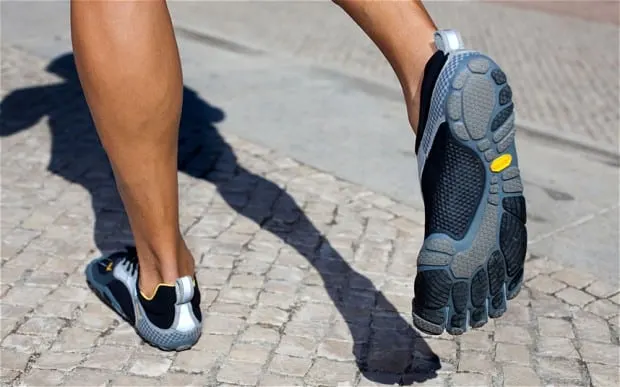
Ask for help. Asking for an expert shoe consultant, preferably who is a runner themselves, can help guide you to the right shoe, and confirm whether or not you should take the plunge to barefoot running shoes.
Look for key components:
This is the most specific and important to barefoot running shoes. The best shoes will have a low heel to toe drop; the ability to flex as much as a foot; uniform height; and as thin of a sole as possible.
Picking shoes are only half the problem: The key to finding your best barefoot running shoe doesn’t end with your purchase. In order to reap the full benefits associated with barefoot running, you need to know how to avoid hurting yourself in the process.
Even for regular running shoes, you’re supposed to break them in a little before going on a long run or racing. With barefoot running, that concept is even more important–and admittedly complicated.
Slow and steady wins the race, so the saying goes, and that principles apply when it comes to transitioning into barefoot running shoes. Here are some steps you’ll have to take:
Begin with casual use, such as walking, standing, and sitting. Since all of us are used to cushioned shoes, it’s going to take time for your feet and legs to adapt. It also gives you a chance to break the shoes in and get a general feel for how they work.
Increase each week:
Even with casual use, however, you don’t want to wear these shoes all day right off the bat. Instead, increase by one hour a day every week, starting with just one hour a day the first week. (That means it’ll take about a month before you’re wearing them for an 8 hour day).
Listen to your feet! If you’re in pain, that’s a sign you’re taking things too quickly. Be patient and reduce your exposure until you’re ready.
Get some help:
Simple products, like toe spacers, can alleviate pressure and ease the transitioning process.
Consider a casual minimalist pair: If all of this sounds like a lot of time spent in your running shoes, or if you simply can’t wear them all day for practical reasons (work, etc), you can also purchase an almost barefoot/ minimalist pair of shoes for everyday use. Vivobarefoot makes a large selection of these. It’s also a great option after you’ve transitioned, so you aren’t minimizing your work by wearing cushioned shoes for the rest of your day.
Know it takes time:
You should only go out running in your barefoot running shoes AFTER you feel Little to NO pain or discomfort. How long it takes depends on your individual body.
Be smart about terrain: Finally, even the best barefoot running shoes cannot protect you from everything, and when you’re first starting, you need to be sure that you pick paths that do not only hazard free, but as easy on your feet as possible. Opt for soft surfaces, like mowed grass, or track turf, over uneven sidewalks or roads. And be sure to avoid gravel paths when you’re starting.
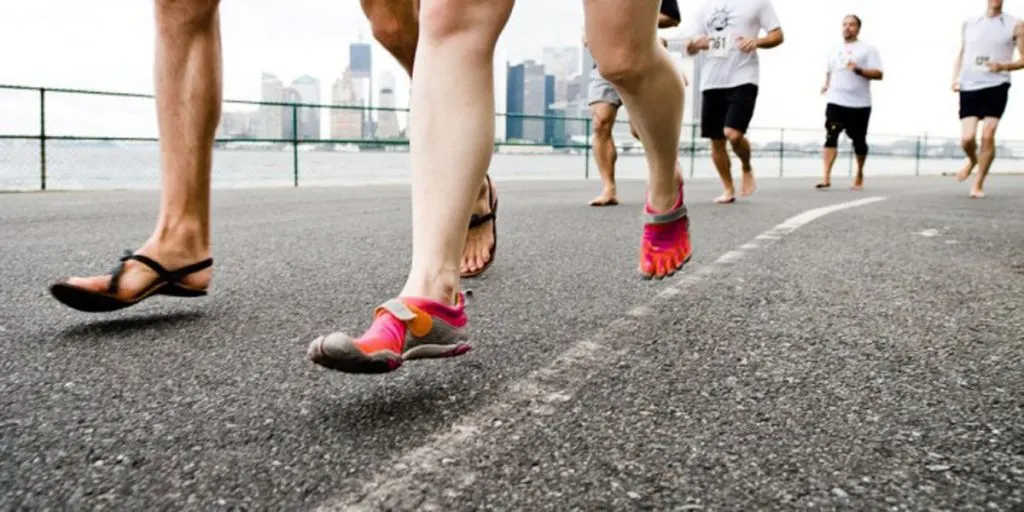
What are the best Barefoot Running Shoes I can buy?
The best barefoot running shoes you can find, as we noted, depends a lot of you, your situation, and overall fit. But when you’re first starting to look, you might still feel a little overwhelmed.
Keeping in mind the principles of low heel to toe drop, flexibility, thin soles, and shoes that resemble feet as much as possible, there’s mostly one company to look at.
Vibram is a a shoe company that sells an array of flexible, barefoot and minimalist shoes for everything from water sports to running. The reason why this company gets our endorsement for the best barefoot running shoes is because it is next to the only reputable company that offers shoes that are truly barefoot, along with a fivefinger design.
Plus, the prices are not far from many quality running shoes.
For Men:
1. V-Trail Shoes
With a mega grip sole for multidimensional grip and no-slip technology, V-Trail Shoes are a better bet for bad winter weather, precipitation, and trail runs.
Since you won’t likely be hitting these kinds of conditions right away, this is a better intermediate to an advanced barefoot running shoe. It is slightly heavier than some other models.
- $120.00 (Check out the latest rates here!)
- Colors: Black/Grey; Gray/Orange; Gray/ Sage; Tapestry/Blue
- 6.4 oz
- Machine Wash
2. V-Run Shoes
This is your best bet for a barefoot running shoe suited to warmer weather, or if you have especially sweaty feet. Lightweight shock absorption, perforation for breathability, and a firm compound support make it an all around moderate approach to barefoot running. You can even use it for hiking rough terrain. It’s also incredibly lightweight.
- $130.00 (Check out the latest rates here!)
- Colors: Black/Yellow; Oyster; North Sea/ Navy
- 4.8 oz
- Machine Wash Cold & Air Dry
3. Men’s See-Ya
The most affordable option, the Men’s See-Ya offers a number of the most necessary features for barefoot running shoes. With a focus on general performance, the shoe incorporates shock absorption with ‘maximum energy conversion’. Temperature range and a soft compound allow for a variety of running terrains, and there’s even gripping technology.
- $100.00 (Check out the latest price here!)
- Colors: Black/Dayglow
- 4.8 oz
- Machine Wash Cold & Air Dry
For Women:
1. Spyridon MR
Fancy name aside, these barefoot running shoes are actually designed as off-road shoes, featuring mega grip technology suitable for both dry and wet terrain. It is a nice compromise between stability and flexibility as a well-a good match for a runner who loves trails off-the-beaten-path.
- Original $120.000; currently on sale for $66.00 (Check out the latest rates here!)
- Colors: Purple/ Black
- 5.6 oz
- Machine Wash Cold & Air Dry
2. V-Run
The women’s version, like the men’s, offers a number of excellent technologies. You’ll get the same features: lightweight shock absorption; breathable perforated mesh; and firm compound for support. One difference: there are even more colors to choose from.
- $130.00 (Check out the latest rates here!)
- Colors: Black/Yellow/Purple; Pink/Red; Yellow; Oyster; Fiery Coral; Teal/Navy
- 4.8 oz
- Machine Wash Cold & Air Dry
3. Women’s V-Trail
Like the men’s trail shoes, the women’s V-Trail shoes offer the support you need but stay true to the barefoot running shoe model. These are actually considered to be an evolution of some of the technologies present in the Spyridon shoes.
Grip technology for both wet and dry terrain, a balance of stability and flexibility, and the same 3D cocoon technology as in the men’s makes this also a good shoe for other sports.
- $120.00 (Check out the latest rates here!)
- Colors: Black/Gray; Gray/Orange; Purple/Black; Yellow/Black; Magenta/ Orange
- 6.4 oz
- Machine Wash Cold & Air Dry
Some Final Considerations:
Barefoot running, and finding the best shoes for you, is ultimately a trial and error process. After asking yourself if barefoot running suits you and your running lifestyle, it’s also important to think deeply about what kind of pair you’ll purchase.
While all of these barefoot running shoes offer an array of great features, not all will be suited to you and your running.
To help you out, here’s a list of questions you should ask yourself when you’re wondering how to find the best barefoot running shoes for you:
- What kind of terrains do I/will I run on?
- What kind of weather might I anticipate? Is having general grip technology enough, or do I need something more?
- How important is breathability to me? Do my feet tend to get sweaty or stay cool?
- Am I looking for other special features, such as temperature control or additional support?
- Have I asked the expert or a runner’s opinion?
- Am I shopping for my shoe size at the right time–do I understand my true size, and leave room for some additional swelling while running?
- Am I fully able to commit to a slow and measured transition process if I’m new to barefoot running?
Above all, invest in a pair of high quality barefoot running shoes, and make sure you’re doing it because it makes sense for you and your running. With this advice in mind, you can start finding the best barefoot running shoes for you with confidence.
Further read:
- Running Shoes vs. Training Shoes: What’s the Difference?
- The Best Motion Control Running Shoes!
- The Best The North Face Running Shoes Guide
- Spartan Race vs Tough Mudder Compared – Which Obstacle Race is Better? - January 22, 2022
- Brooks Addiction Walker vs New Balance 928: Which is Best? - December 7, 2021
- Brooks Ravenna vs Adrenaline – Which is Best for You? - December 4, 2021
